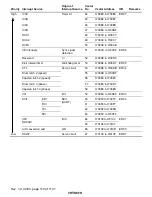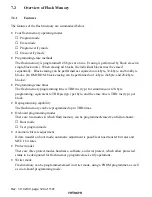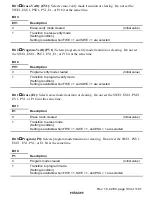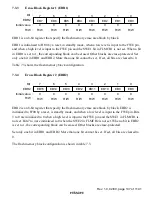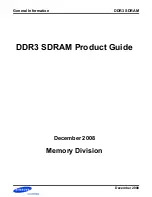
Rev. 1.0, 02/00, page 124 of 1141
7.2
Overview of Flash Memory
7.2.1
Features
The features of the flash memory are summarized below.
•
Four flash memory operating modes
Program mode
Erase mode
Program-verify mode
Erase-verify mode
•
Programming/erase methods
The flash memory is programmed 128 bytes at a time. Erasing is performed by block erase (in
single-block units). When erasing all blocks, the individual blocks must be erased
sequentially. Block erasing can be performed as required on 4-kbyte, 32-kbyte, and 64-kbyte
blocks. (In OSD ROM, block erasing can be performed on 1-kbyte, 2-kbyte, and 28-kbyte
blocks).
•
Programming/erase times
The flash memory programming time is TBD ms (typ.) for simultaneous 128-byte
programming, equivalent to TBD
µ
s (typ.) per byte, and the erase time is TBD ms (typ.) per
block.
•
Reprogramming capability
The flash memory can be reprogrammed up to TBD times.
•
On-board programming modes
There are two modes in which flash memory can be programmed/erased/verified on-board:
Boot mode
User program mode
•
Automatic bit rate adjustment
If data transfer on boot mode, automatic adjustment is possible at host transfer bit rates and
MCU's bit rates.
•
Protect modes
There are three protect modes, hardware, software, and error protect, which allow protected
status to be designated for flash memory program/erase/verify operations.
•
Writer mode
Flash memory can be programmed/erased in writer mode, using a PROM programmer, as well
as in on-board programming mode.


